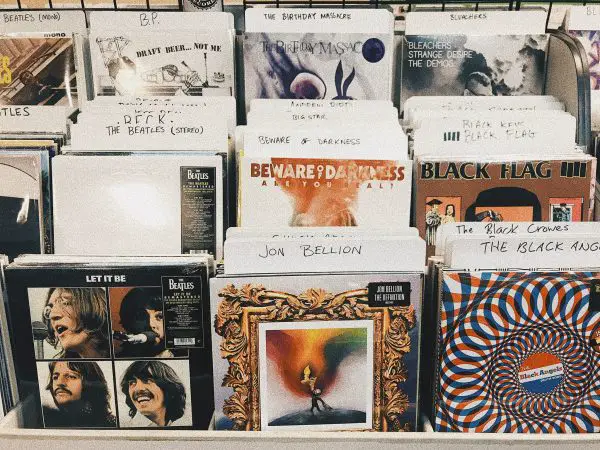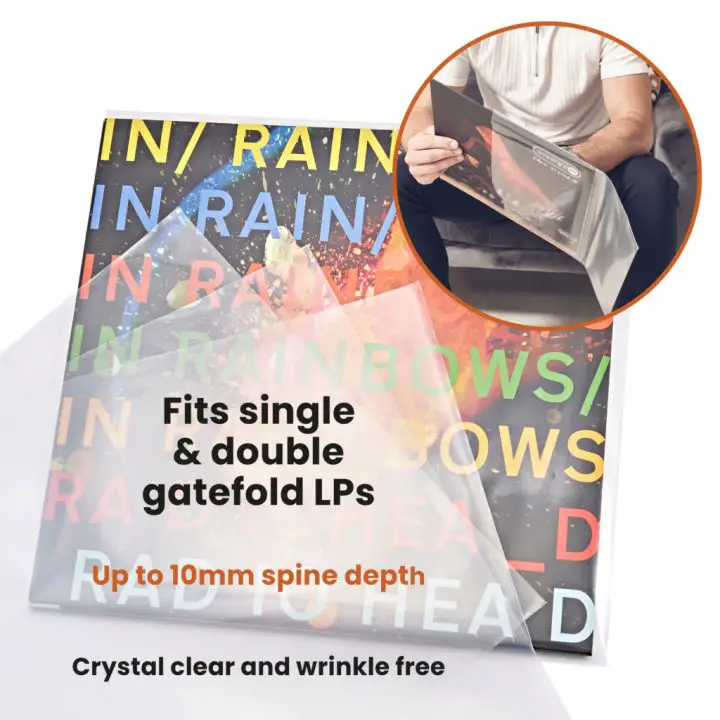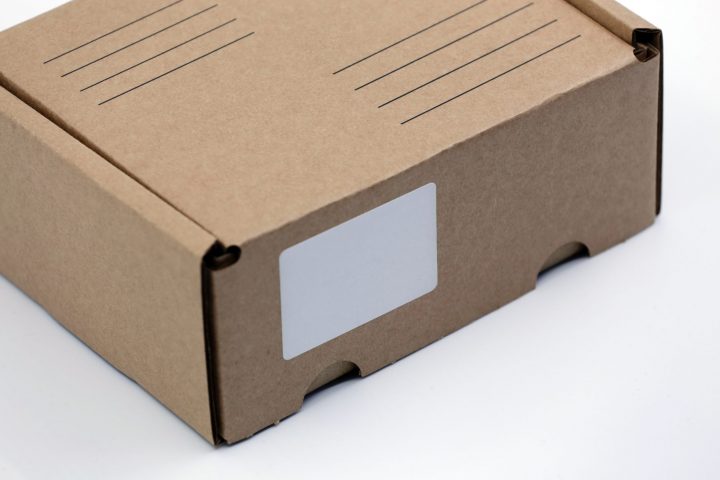You might just be a bit of a hobbyist, hoping to sell a record that you no longer listen to very much. This can be a record that might fetch a reasonable price, having been kept in good condition or rare as it might be. This can also simply be a way to purge your vinyl collection of any duplicates you have acquired over the years.
Alternatively, you might also be a more seasoned seller of vinyl records in a regular store, hoping to make a few extra pennies on the side by placing your records online as well as in your store. Perhaps, you are even more of an experienced online seller looking for some tips and tricks to refresh your memory after a long hiatus.
Whatever your reason for approaching this article, you will undoubtedly be looking to learn how to ship vinyl records, and learn you shall, with this handy and, we hope, comprehensive guide on the subject, taking you through it step by blessed step.
Table of Contents
- Step 1 – Remove Vinyl from Jacket
- Step 2 – Place in a Protective Sleeve
- Step 3 – Place All in a Brand New Cardboard Record Mailer
- Step 4 – Insert a Stiffener
- Step 5 – Fold and Tape the Record Mailer Into Place
- Step 6 – Write Out the Shipping Label
- Step 7 – Write FRAGILE and You Are Good to Go
- Final Tones
- FAQs How to Ship Vinyl Records
Step 1 – Remove Vinyl from Jacket
There are different steps when learning how to ship vinyl records. Whatever sleeve the record in question finds itself in, it will typically have seen some wear already. It might just be from having been used and abused by its previous owner (not pointing any fingers). It could also be that the sleeve is the originally cellophane wrapping that the record was released in from the factory.
No matter what the reason, there is no doubt that any consumer receiving a new or old record will appreciate receiving it in a brand new, fresh, clear sleeve in order to store their record properly. They will surely be prompted to say, ‘this seller sure knows how to ship vinyl records.’ The original inner sleeve will of course seen some wear along the way, so do not be too afraid or conservative to use a new inner sleeve to place the record in.
If this is an inner sleeve that is specific to this record, whether custom printed or an original, then consider keeping them alongside the entire package, with other fragile inserts, such as lyric sheets or other special goodies included in some releases, with the disc in the new sleeve externally.

Step 2 – Place in a Protective Sleeve
This is somewhat optional, though it certainly makes the whole package look certified like the real deal. These protective record sleeves can be an amazing finishing touch to on how to ship vinyl records that really sets you apart from other sellers throughout the world wide web.
Not only is this an aesthetic choice, but it sends a very real message to whoever is purchasing this record or otherwise receiving it that you care about their purchasing or receiving it. Place the disc outside the jacket and inside the plastic sleeve, for this will prevent seam splits and help prevent the disc from getting scuffs by moving around during shipment. If there is more than one disc, you can simply place one on top and one on bottom of the album cover with both inside the plastic sleeve, repeating this logic for however many extra discs there might well be.

There are several releases, certainly of the more decadent variety, which do in fact use more than one or two discs, and really make you rethink what you know about how to ship vinyl records. Think To Be Kind by Swans, or any experimental classical or ambient music from the latter years of the 20th century.
Step 3 – Place All in a Brand New Cardboard Record Mailer
This ought to be an essential purchase for any record seller looking to sell records more regularly. They can be bought in large quantities in bulk, and more and more outlets are offering these bulk purchases in the form of recycled cardboard, meaning that one’s carbon footprint is not quite as dense as it might otherwise be.
Many other experienced vinyl sellers will tell you that there are certain types of parcels to avoid entirely, such as the white-style envelopes, which simply do not offer the requisite support for the precious cargo contained within. Even with stiffeners they are frequently responsible for damage to the record’s sleeve and many would consider them simply too fragile to do the job properly.
The reason we specify here that to learn how to ship vinyl records we recommend that the mailer should be brand new is that it is generally advised to use them only once. They are designed to live for one mailing and so might not bear enough structural integrity to protect the precious cargo within. This can have a bearing on your reputation as a seller and can also, if particularly uncareful, mean that the address of a previous buyer is revealed to the next buyer for whom the old mailer is used.

Many would also suggest that you do not try to improvise and make your own cardboard mailer, unless you are in some way experienced as this sort of design. Otherwise, the record simply is not getting the protection it deserves with a piece of technology (yes, technology!) specifically designed for the purpose. This is quite severely frowned upon by certain authoritative sources.
Step 4 – Insert a Stiffener
The material that this is constructed from should not matter so much as the reason that it is being used in the first place. The aim, whatever the material, is to prevent as much as possible the movement of the package within the record mailing package. Thus, as long as the material used is doing just that, there should not be a problem. I suppose points go to those who can use the most unexpected or bizarre (though simultaneously ingenious) material to protect the precious cargo from probable doom.
Whichever type of material you do eventually choose, you will want to sandwich the vinyl record into the mailer to the best of your ability, making sure there is as little room as possible for the record to move around in transit. This movement is no doubt one of the main factors for a record being damaged in transit, and one of the main prompts for someone receiving a package containing a record and saying aloud, ‘gee! this seller sure doesn’t know how to ship vinyl records!’
There are plenty of wholesale ways to stiffen the inner lining of a package in this way, many of which are incredibly affordable and, like the mailers themselves, are more and more often created with recycled and biodegradable materials than ever before. There are plenty of options if you are looking to mail records in this way!
A pro tip, and one which I have learned along the way, is to use cardboard as a stiffener inside the mailer package, but instead of just throwing it in there, you want to place it against the grain of the mailer itself. In this way, more friction is created than there is in the sum of its parts, providing you with precious additional protection for that precious cargo.
Step 5 – Fold and Tape the Record Mailer Into Place
This step ought to be pretty self-explanatory, though can be easily neglected or just done plain wrong, leaving the buyer with a mess of a package and leaving you with a refund to be sorting out!
Fold up the cardboard record mailer, making sure that all connections and threads and joints are properly and tautly tucked together, as tightly as is possible. There should be as little breathing room within as there can be, which, with the stiffener placed safely inside, there shouldn’t be in the first place.
Next, to learn how to ship vinyl records you will want to tape the whole business together securely, making sure not to lose any of the tightness and security that has thus far been achieved. A pro tip here would be to make sure that the very centre is taped as much as possible, ensuring that the innards are kept together during shipping and prevented from moving about as much. It can also be easy to neglect the corners and the edges, so extra care is necessary to make sure that these elements are not neglected.
Step 6 – Write Out the Shipping Label
This is certainly one of the areas most prone to human error, as it can be all too easy to write out or otherwise reproduce the wrong address on a package. Once this has happened, it can open up a whole host of other problems, for tracking down packages in this way can be a truly arduous process. Just thinking about how to ship vinyl records, how many packages and letters pass through the hands of shipping companies on a daily basis, all heading towards different and seemingly disparate locations nationally and internationally, and you get the sordid and overwhelming picture.
Once you are sure that you have got the right address to begin with, and you have checked again, then get another person to check for you. You really can never be too careful, and you might end up, if things go awry, having to pay a refund and losing the record that you originally had in the first place. This is rendered far simpler if the label is printed, though again it can be easy at this stage to cover up the label by accident with sticky tape. So, just make sure you are doing things right by making the label clearly visible to all involved.
Step 7 – Write FRAGILE and You Are Good to Go
At this stage of how to ship vinyl records, it can be all too easy to forget to make sure that anyone handling this package along the length of its journey knows that this is a fragile package, to be handled with as much as caution as can be mustered. Sure, the shipping industry is an incredibly busy and stressful line of business, so it is unlikely that it will be dealt with much differently, but I suppose it is more about ensuring that you as a seller did everything you could to make sure it was protected along the way.

If you are particularly paranoid about a vinyl’s journey to its buyer, then you can even go ahead and buy insurance on the package. Most shipping companies offer such a service in fact, and this can be an apposite way to ensure you do not make any losses on the records that you end up selling online and sending to buyers around the world, across spans of hundreds of miles and through several different time zones.
Final Tones
So, there you have it! I hope this has been a helpful and comprehensive guide on how to shop vinyl records in the best and most effective and economical way. If you have any questions or are otherwise confused by the above steps, feel free to do some more research or leave a comment below!
FAQs How to Ship Vinyl Records
How much does it cost to ship records?
This will very much depend on the amount of discs present, the location of you (the seller) and the location in the world of whoever is purchasing the record. The price of a shipment is going to vary considerably depending on where in the world the record is going in relation to where you are selling it from. A national shipment, for example, will of course cost considerably less than a shipment overseas or across borders. Many purchases coming into countries from other countries are liable to extra fees and even taxation before being delivered to the buyer, so these are all things to consider.
Are vinyl records considered media mail?
Media mail is a cost effective way to send media and other educational materials. By this definition, vinyl records are indeed included in this bracket and are in fact welcomed. The United States Postal Service defines it as thus: ‘Available for sending small and large packages containing books, film, manuscripts, sound recordings, video tapes, and computer media (such as CDs, DVDs, and diskettes) only. Media Mail cannot contain advertising. Books shipping as Media Mail may contain incidental book announcements.’





